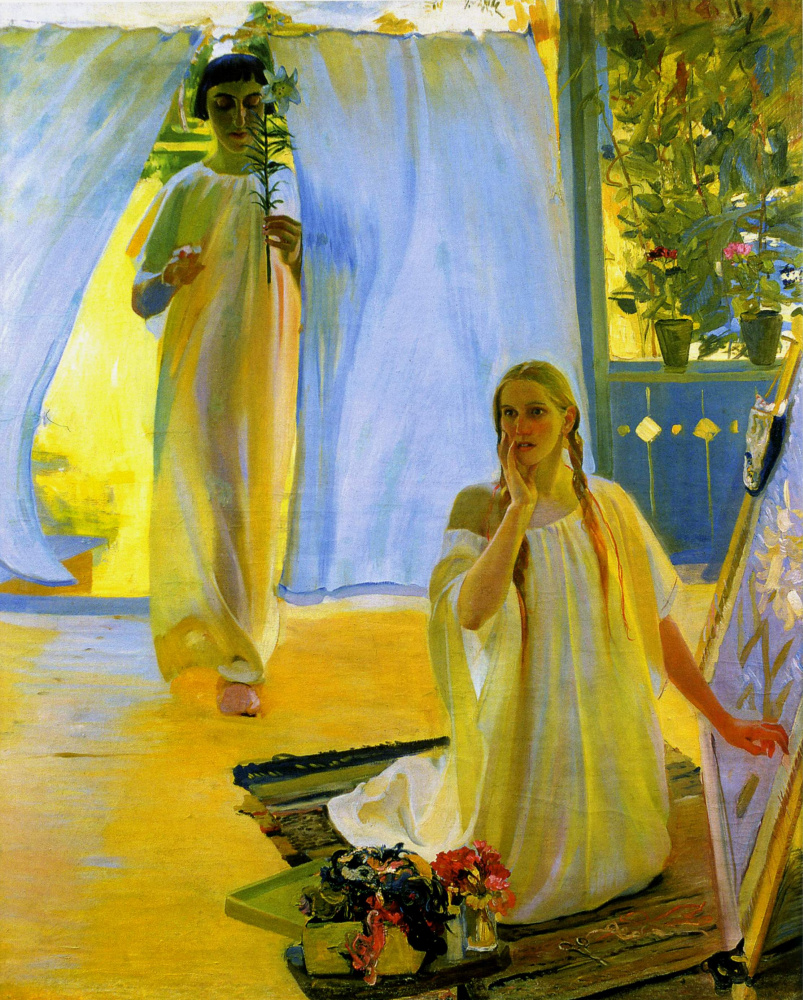log in
Enter site
Login to use Arthive functionality to the maximum
The Annunciation
Alexander Murashko • Painting, 1909, 198×169 cm
Description of the artwork «The Annunciation»
In 1901, when Alexander Murashko first came to Paris to study present European painting, the work of the Impressionists here already ceased to be something out of the ordinary. But for the young artist, who in his youth was intended for a career as a painter, the play of light and shadow on their canvases have become a real revelation. Even modern, coming on the heels of impressionism, was not able to kill the impression. Gradually honing his skills, traveling around Europe, and then after returning home, Murashko often pays attention to light effects in their works.
One such activity has become quite iconic paintings in the artist – "the Annunciation". It is noteworthy that this is the only painting on religious themes, written Murashko. Often he wrote of his contemporaries, even those subjects, which prompted him imagination. Here the characters of the painting is difficult to attribute to any era. The girl, kneeling on a wicker Mat and, apparently, occupied with embroidery, can be originally from any time. On the other hand, the carved wooden porch and flowers in pots rather say that these details Murashko wrote from nature.
Later, the artist told us how he came up with this story. The fact that their house often frequented variety of guests, and one day he saw the girl silently rolled away the curtain and entered into the living room. In the artist's imagination, the girl turned to the Archangel Gabriel, came to Mary with the good news – almost ethereal figure with closed eyes, illuminated by the sun. This quiet and some very domestic scene, however, wonderfully conveys the solemnity of the moment.
Author: Eugene Sidelnikov
One such activity has become quite iconic paintings in the artist – "the Annunciation". It is noteworthy that this is the only painting on religious themes, written Murashko. Often he wrote of his contemporaries, even those subjects, which prompted him imagination. Here the characters of the painting is difficult to attribute to any era. The girl, kneeling on a wicker Mat and, apparently, occupied with embroidery, can be originally from any time. On the other hand, the carved wooden porch and flowers in pots rather say that these details Murashko wrote from nature.
Later, the artist told us how he came up with this story. The fact that their house often frequented variety of guests, and one day he saw the girl silently rolled away the curtain and entered into the living room. In the artist's imagination, the girl turned to the Archangel Gabriel, came to Mary with the good news – almost ethereal figure with closed eyes, illuminated by the sun. This quiet and some very domestic scene, however, wonderfully conveys the solemnity of the moment.
Author: Eugene Sidelnikov


